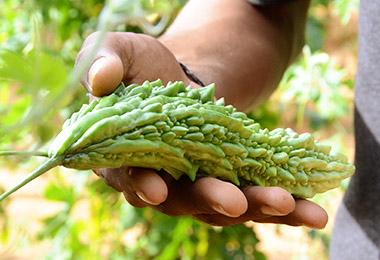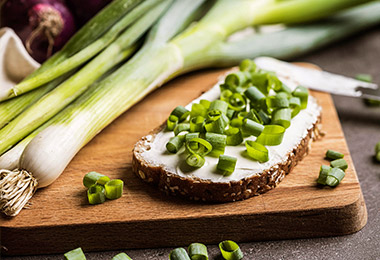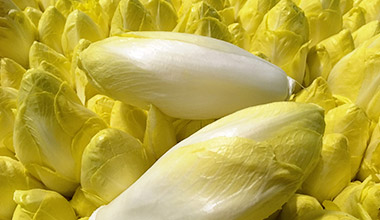|
|
 |
|
|
Limagrain: A diversity of cultivated plant species throughout the world
|
|
|
Throughout the world, farmers grow vegetables and cereals to meet the food needs of their contemporaries. These needs differ from one region to the next and are closely related to each person’s culinary habits. Limagrain, the No. 4 seed company in the world, actively contributes to cultivated plant diversity by distributing more than 300 new varieties each year from its breeding programs. Present in 57 countries, the Group is particularly focused on ensuring the progress of agriculture through varietal innovation based on plant genetics. Limagrain’s various Business Units are thus interested in several crops and each year breed varieties that enrich the plant diversity of cultivated species throughout the world.
|
|
|
|
 |
What is the difference between a species
and a variety?
|
|
|
|
|
|
|
Variety: Type, kind, within the same set; a smaller unit than a species, the individuals of which present a shared trait that differentiates them from other varieties of the same species.
Source: Le Petit Larousse Illustrated Dictionary 2019.
|
|
|
|
|
Research work close to markets
|
|
|
The Group deploys an important network of more than 100 research stations spread throughout the world. R&D teams make use of the existing biodiversity in the regions of operation to create new varieties specific to each region. The breeders’ work thus enriches Limagrain's catalog, which offers close to 6,000 varieties covering 55 plant species. The research programs also enable the Group to offer a diversity of varieties better adapted to the climate, dwindling resources, and diseases, and thus provide a higher yield. Breeders work for a long time before seeds are distributed: between 7 and 10 years of research are needed to develop a new variety.
|
|
|
|
Biodiversity
|
|
|
|
|
|
Limagrain contributes to enriching plant biodiversity: in 2019-2020 337 new varieties were distributed and 55 species benefited from plant breeding programs.
|
|
|
|
|
|
|
 |
Henri de Vilmorin introduced witloof chicory to France in 1873. Since then, R&D teams have been developing genetic and technological innovations to improve productivity and provide a line-up that covers all market segments. Today, three out of four witloof chicories come from Vilmorin-Mikado research programs.
|
|
|
|
|
|
Guaranteeing local species
in each region
|
|
|
Limagrain contributes to providing farmers with seeds that allow them to find outlets for their production. For this effort, the Group seeks to identify specific consumer expectations within local markets. For example, in Asia, HM.CLAUSE breeds diverse crops such as bitter gourds and offers them in various colors, textures, and sizes, depending on the country. In the kitchen, this very acidic fruit in the shape of a summer squash is enjoyed both in soups and combined with eggs. Another species offered by the Business Unit is Okra, also called Gumbo mainly grown in India and eastern Africa. This speciality species, low in sodium and rich in food fibers, can be grilled or added to soup or salads.
|
|
 |
|
|
Vilmorin-Mikado, another Group Business Unit, also breeds several local species that cater to each person’s food customs. The subsidiary offers a unique species of onion that looks like a leek due to its long shape. These onion bunches are used in several Asian dishes such as Sukiyaki (a Japanese stew), fried beef, or noodle soup. Vilmorin-Mikado also develops several varieties of melons much appreciated by the Japanese population. They differ from their Charentais cousin due to their creamy and juicy texture. Growing certain melons requires artisanal know-how. They are generally given as gifts and Europeans are often surprised by their price. This year, two Japanese melons were sold at auction for more than 20,000 euros.
|
|
 |
|
|
Europe also has its own specific vegetables. One example is corn salad generally enjoyed for its unique taste. HM.CLAUSE, No. 1 in the world in corn salad seeds, breeds varieties adapted to the demands and growing techniques that vary somewhat depending on the production area. Primarily grown in Europe, France is the largest producer of corn salad with 8,000 ha, followed by Italy with 4,500 ha, and Germany with 2,000 ha. Vilmorin-Mikado is interested in another popular item in our dishes, grown and consumed primarily in France, Belgium, and the Netherlands: witloof chicory or endive! This Limagrain Business Unit is now No. 1 worldwide. It distributes a large line-up of varieties of this winter leafy green that is low-calorie, full of nutrients, and delicious raw or cooked!
|
|
|
|
Witloof chicories - Topscore
|
|
|
|
|
|
E-NEWSLETTER PUBLISHED BY THE LIMAGRAIN PRESS DEPARTMENT
|
|
|
|
If you no longer wish to receive this information, please send an email to mallory.gramond@limagrain.com.
|








